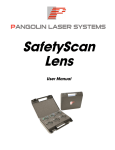Download here - Michelin
Transcript
1 Safety and utilisation advice Introduction The tyre is the only point of contact between the vehicle and the ground. Users must ensure that they preserve the quality and performance of their tyres. To do so, it is recommended that users adhere to the following safety instructions and user recommendations. These recommendations are valid subject to more restrictive local provisions: legal, regulatory requirements, etc. How do you read a tyre? 205: tyre width in mm 45: tyre series (ratio of height with width of H/S section: 0.45) R: structure: radial 16: inside diameter in inches 83: load capacity index V: speed index Mark of compliance with the ECE30 ruling with approval number Sound Mark of compliance (Noise): 2001/43/EC directive Name of the range DOT: department of transportation Factory code Week and year of manufacture Size code Optional code 2 Definitions of other markings: Reinf: "Reinforced”: tyres with an IC greater than the size. Extra Load: New marking with the same meaning as Reinf. XSE: “X” reference to radial technology “S” safety “E” economy N0 - N1 N2 - N3 K1 - K2 C1 ★ MO AO MO1 RO1 A 3 PMSF = 3 Peak Mountain Snow Flake = The 3-Peak Mountain with Snowflake symbol Additional marking on M+S tyres indicating they are designed for severe snow conditions. Specific manufacturer markings The GREEN X marking on the sidewalls of a MICHELIN passenger car, Commercial, 4x4 tyre is the guarantee that this tyre offers a level of energy efficiency which is one of the best on the market. With this marking, Michelin undertakes to reduce the fuel consumption of vehicles and, thus, reduce CO2 emissions. Choice of tyre • The choice of a tyre must be compliant with legislation and with equipment recommended by the vehicle or tyre manufacturer or by an official organisation (size, load and speed indices, tyre structures, etc.). Moreover, it is necessary to take account of the conditions in which the tyre will be used in order that its performance meets the user’s expectations. • In the event of the original vehicle equipment being modified, it is advisable to make sure that the solution offered is compliant with the legislation in force, the vehicle’s technical constraints, conditions of use and the manufacturer’s recommendations. (Please refer to regulations in force in the local country.) In some countries, a vehicle thus modified must receive administrative authorisation. • Before being fitted, any second-hand or used tyre must be subjected to careful scrutiny in order to guarantee the safety of the user and compliance with the regulations in force (see p.7 Vehicle checks and maintenance). • It is recommended that tyres of comparable wear are fitted on the same axle. Some legislation sets a maximum differential. • According to legislation in force and for technical reasons, it is either mandatory or strongly advised to use two tyres of the same tread design on the same axle. • A temporary spare wheel must not be used on a long-term basis and above a maximum speed indicated on the tyre. The driver must adapt its behaviour to this new equipment. Copyright MICHELIN - All rights reserved 3 Use of tyres • Never use the tyre beyond the limits of the technical specifications for which it has been approved. Certain excessive or abnormal geometrical settings for the vehicle may have an effect on the tyre’s performance. • Poor use or wrong choice of tyre can also contribute to premature wearing of certain mechanical parts. Fitting Introduction • Correct fitting, performed in accordance with recommended operating procedures and complying with the safety rules in force, ensures excellent protection for people and material, and allows the tyres full potential to be exploited. • Poor fitting can cause damage to the tyres, the vehicle or to people (serious, even fatal injuries). • It is therefore essential that these operations are carried out by people who have been trained and who have the appropriate equipment available. • If the operation is carried out by an apprentice, the latter must never be alone. • In all cases, it is essential to refer to the technical instructions of the tyre manufacturer, vehicle manufacturer and wheel manufacturer, as well as the user manual for the tyre-fitting machinery or equipment. General precautions • Operators must always wear their normal protective clothing. • Operators must have access to an operating procedure. • Operators must ensure that the vehicle is stationary, the vehicle engine is switched off and that the vehicle is properly stabilised (handbrake, blocks, supports, etc.). 4 Precautions for removal When removing the vehicle wheel • If the tyre is twin-fitted or if the rim shows evidence of damage, the tyres must be deflated prior to removal of the whole fitment. • Ensure that the tyre’s temperature allows it tyre to be removed safely. • Comply with the manufacturers’ recommendations and instructions. Precautions for fitting • Ensure that the wheel and its components are in a good condition. • Check dimensional compliance (tyre and wheel). • Check tyre/wheel, tyre/vehicle and tyre/usage compliance. • Adhere to the positions, direction of fitting, direction of rotation and instructions when referred to on the tyre sidewalls. • If there is a rubber valve, this must be replaced as a matter of course by tubeless fittings. • If there are metallic valves, check the air tightness and continue with the replacement of valves or seals if necessary. • After fitting the tyre to the vehicle, a torque wrench must be used to achieve the optimal torque as specified by the vehicle manufacturer. Copyright MICHELIN - All rights reserved 5 Precautions for inflating • Tyre inflation is an essential factor, not only for optimisation of tyre performance but also in terms of SAFETY. • It is necessary for correct vehicle behaviour (roadholding and braking) as well as maintaining the tyre’s stability. • Only use inflation equipment intended for this purpose and fitted with a pressure limiter. In no event must a person or operator be in the immediate proximity of the equipment in order to be out of the path of any potential discharge in the event of an incident. Operating pressure • The inflation pressure that must be strictly adhered to is that recommended by vehicle manufacturer in passenger. It can be found at the vehicle user manual and/or on the vehicle itself (door, fuel filler cap, chassis, etc.). • Under-inflation can significantly affect the vehicle’s behaviour. It is also true for excessive over-inflation (Vehicle checks and maintenance, pressure p.7). Balancing • Lack of or faulty balancing manifests itself in the form of vibrations, within various speed ranges. • Wheel balancing is therefore absolutely essential for driving comfort and continued vehicle and tyre performance. • Wheel balancing equipment must include a centring system compatible with the wheel hub and be calibrated in accordance with the manufacturers’ instructions. These two points are determining factors for the quality of the operation carried out and are often the cause of defective balancing, which is manifested by persistent vibrations. 6 Storage and maintenance General conditions Storage should be • In premises that are well-ventilated, dry and temperate, protected from direct sunlight and bad weather, • Away from any chemical substances, solvents or hydrocarbons likely to interfere with the nature of the rubber, • Away from any object that could penetrate the rubber (sharp metal, wood, etc.), • Away from any source of heat, flame, incandescent object, material that could cause sparks or electrical discharges and any ozone sources (transformers, electric motors, soldering devices, etc.). If the gauge allows the tyres to be stacked, ensure that they are not out of shape. If the tyres are to be stored over a long period, rotate them (reverse the order of the tyres). Avoid crushing tyres under other objects. Moreover, accessories must be stored in their original packaging, on surfaces that do not present any danger of cutting, tearing or perforation. In all cases, for the handling of tyres and accessories, use instruments and equipment that is not harmful to tyres. Operators must always wear their normal protective clothing for handling. Short term storage (up to 4 weeks): Tyres can be stacked one on top of the other, preferably on pallets. The height of the stacks must not exceed 1.20 meters (4ft). After 4 weeks, piles must be re-made by reversing the order of the tyres. When tyres are mounted on rims, they must be stored inflated, in a vertical position or in a single row on shelves. Copyright MICHELIN - All rights reserved 7 Long term storage: Tyres must be stored vertically on shelves situated at least 10 cm (4”) from the ground. In order to avoid distortion, they should be slightly rotated once a month. Long-term vehicle immobilisation If a vehicle is not used for a long period of time, tyre pressure should be checked regularly and maintained at levels recommended by the manufacturer. Vehicle checks and maintenance General recommendations • Ensure that the vehicle is stationary before any inspection. • Tyres must be inspected regularly in order to detect any unusual wear and potential damage. • Wheel torque must be checked in accordance with the vehicle manufacturer’s recommendations. • Any perforations, cuts or visible distortion of the tread, sidewalls or flange area must be the subject of a thorough (internal/external) examination of the tyre by a tyre professional. It is the same for any damage to the rim. In all circumstances, do not put back into operation any tyres that exhibit damage, such as deformed bead or visible bead wire, ply or rubber separation, visible cable cords, damage from grease or corrosive particles, marbling or abrasion of the interior rubber resulting from any running at insufficient pressure. Each time the vehicle is inspected, check that the valve cap is in good condition. If in doubt, replace it. 8 Checking for wear • Checking for wear must always be carried out at several points on the tyre. • This check can be carried out using a tyre depth gauge or by looking for signs of wear on the tread (noted on the sidewall by a symbol when present). • If the legal or technical limit for wear has been reached, the tyre must be removed and replaced. • A tyre professional must be consulted if there is abnormal wear or a difference in wear between two tyres on the same axle. Pressure • Given that a tyre loses pressure naturally, it is necessary to adjust it periodically; this check will enable any abnormal loss of pressure to be detected. This check must be carried out on all the vehicle’s tyres (including the spare wheel when there is one). • The use of a vehicle that has tyres with insufficient inflation pressure leads to an abnormal increase in operational temperature and may cause damage to internal components. This damage is irreversible and may lead to the tyre bursting, with sudden deflation. The consequences of running with insufficient inflation pressure are not necessarily immediate and may appear even after rectification. • Insufficient pressure also strongly increases the risk of aquaplaning. • An overinflated tyre can cause rapid and irregular wear, resulting in increased susceptibility to impacts (tread damage, rupture of the carcass, etc.). • If they are checked after running, the tyres are therefore hot. Given that pressure increases with temperature, a hot tyre must never be deflated. • If pressure is checked when hot, the pressure should be readjusted in line with the manufacturer’s recommendations. If tyre pressure is checked hot, add 0.3 bar (4 psi) to the recommended pressure. • Inflation with nitrogen is not an exemption from the need to check tyre pressure regularly. • In all circumstances, adhere to the pressures recommended by the vehicle or tyre manufacturers. Copyright MICHELIN - All rights reserved 9 Repair • All repairs must be carried out by a trained and qualified professional. • Repairs are preceded as a matter of course by a detailed inspection of the tyre by the professional. Not all damage can be repaired. • A tyre that has been run underinflated or flat may have suffered irreversible damage and only an exhaustive check of the interior of the tyre will enable a diagnosis of whether or not the tyre can be put back into use. Removal of the tyre is therefore essential in order to assess with certainty its actual condition and the type of repair required. • In the event of a puncture, injection through the valve of sealing products (instant puncture sealant, etc.) can only be a partial and temporary solution. These products can cause compliance problems with the tyre, wheel, valve, pressure sensor, etc. It is essential to follow the manufacturer’s recommendations. In this case, a tyre professional must be consulted to check the tyre and, if possible, make an immutable repair. 10 Product life Tyres are made from different types of materials and rubber-based components, whose properties are essential to the proper running of the tyre itself. These properties evolve over time. For each tyre, this evolution depends on many factors, such as climate, storage conditions (temperature, humidity, position, etc.), conditions of use (load, speed, inflation pressure, road damage, etc.) to which the tyre is subjected during its working life. These ageing factors vary so much that it is impossible to predict the life of a tyre with any accuracy. This is why, in addition to regular user checks, it is recommended to have the tyres regularly checked by a qualified professional, who will determine whether the tyre is fit to continue in operation. This inspection must be carried out at least once a year, 5 years or more from the date of the tyre being put into service. The older the tyre, the more probable it is that it may be necessary to replace it due to ageing related to its storage and/or usage or because of other factors established during checks. Date of the tyre fabrication Date of the first use 5 years It is recommended to have the tyres yearly checked by a professional We advice the replacement of the tyres 10 years Non-compliance with these recommendations may harm the vehicle’s performance and may cause handling problems and/or malfunction of the tyre that may put the safety of the user and third parties at risk. Michelin may in no way be held responsible for damage that may occur as a result of and/or when being used contrary to its instructions. Copyright MICHELIN - All rights reserved























